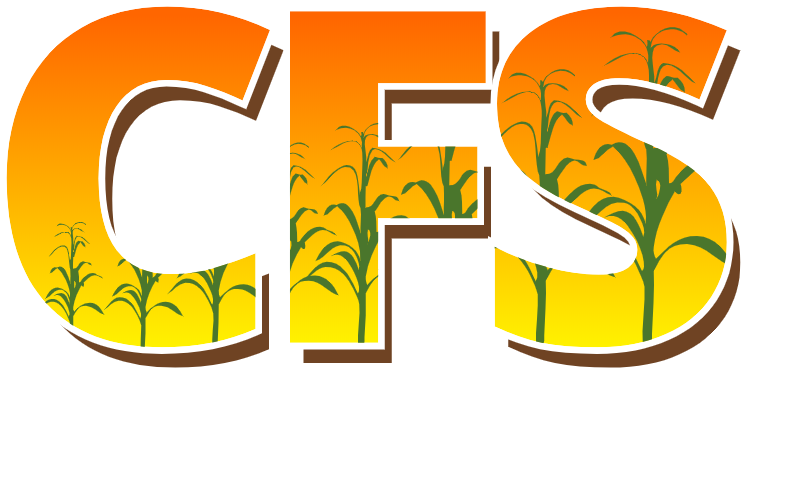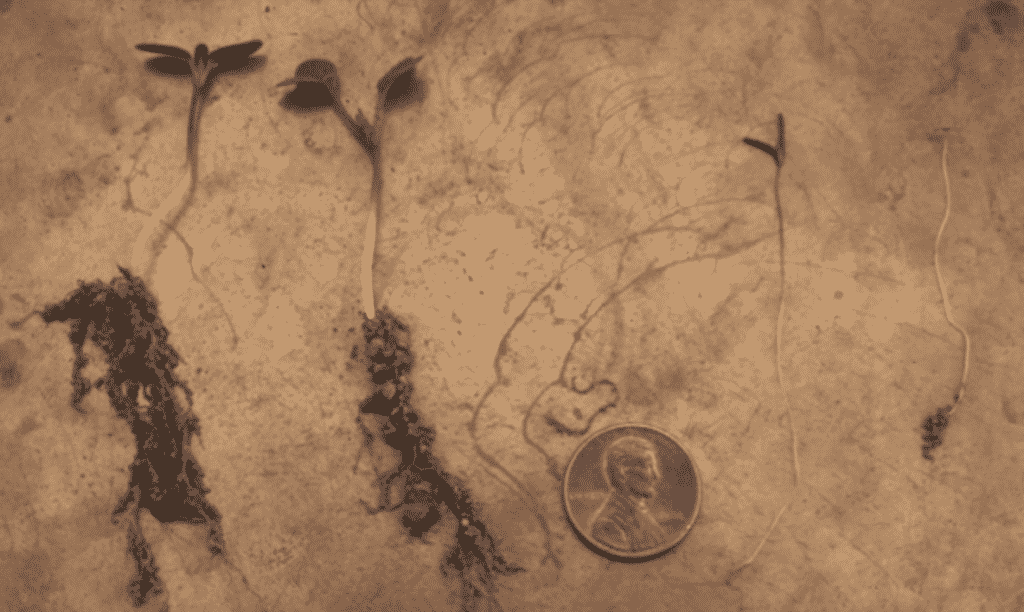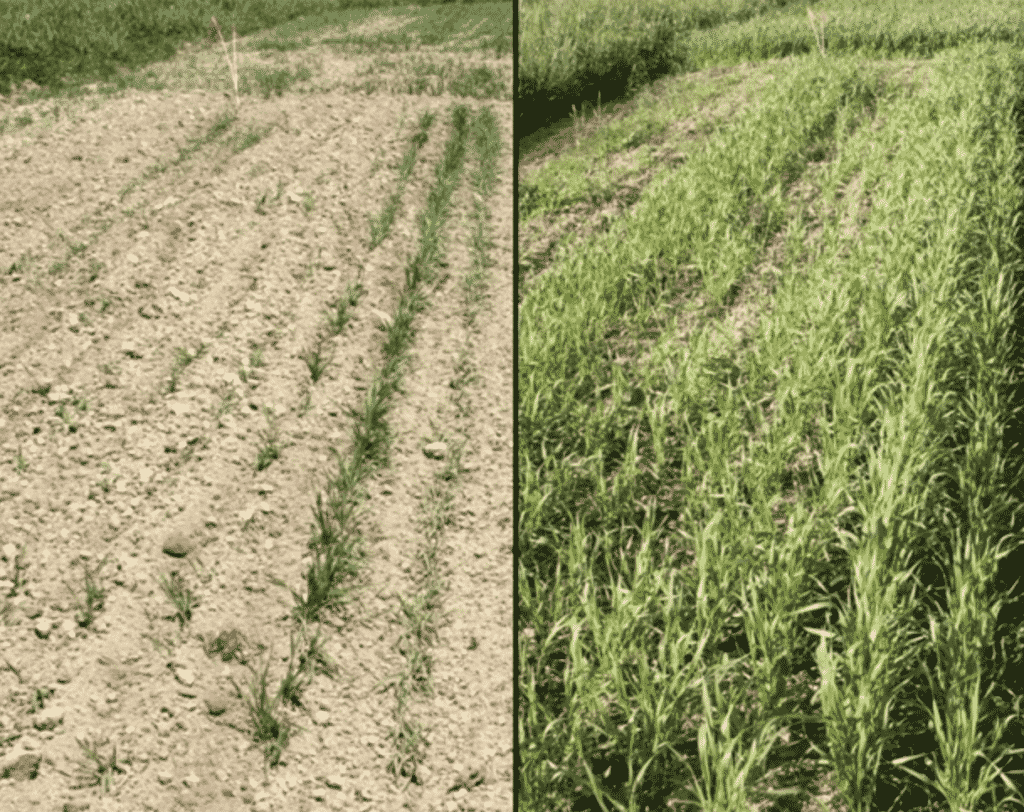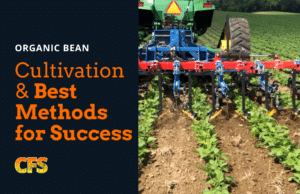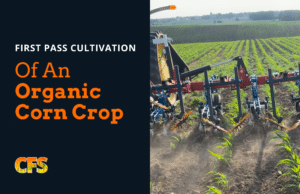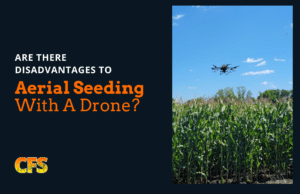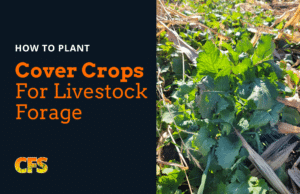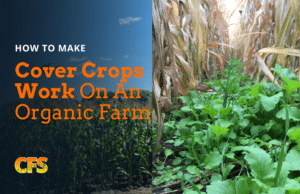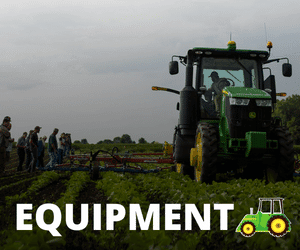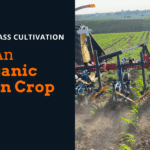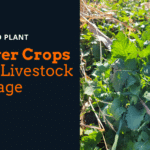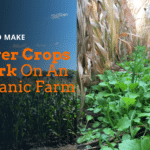Blind cultivation is a highly effective mechanical weed control method that works due to differences in weed and the planted crop height. Tools used in blind cultivation vary, from the most common implement, a tine weeder, to cultivators and rotary hoes. For blind cultivation to work, the planted crop must be taller than the weeds your implement is targeting. The mechanical action in the farmers implement and disturbance in the dirt dislodges and covers weeds, even before they’re set to emerge.
Demonstrating the difference in weed and planted crop height
The photo above, by Eric Gallandt, demonstrates the difference in plant and weed seedlings where blind cultivation is most effective. The plants on the right, weed seedlings, are in what is known as the “White Thread” stage of growth. These plants are removed just after emergence, while some are destroyed before they can even begin to emerge.
Most Effective Blind Cultivation Methods
One of the single most effective methods of blind cultivation involves the use of a tine weeder. A tine weeder uses spring loaded tines, with applied down-pressure, to forcefully disturb the soil without harming the crop. The reason this works is because of the difference in stages of growth between the plant and the weed itself. Without a difference in the height or growth stages, farmers run the risk of damaging their crop.
Tine Weeders
Tine weeders are the most effective form of blind cultivation. Tine weeders do not damage crops when operated correctly and they can be used multiple times before the initial cultivation. We discuss why tine weeders are so effective more in this article.
Cultivators
While cultivators are not technically a blind cultivation tool, attachments to the back such as spring tines, can help with blind cultivation and maximum soil disturbance from plant row to plant row.
Rotary Hoe
A rotary hoe is one of the least common mechanical weed control implements used in blind cultivation. While it can be done, we do not recommend it.
How To Do Blind Cultivation
The biggest thing to consider when making blind cultivation passes is not driving over your plant rows themselves. Specifically for blind cultivating row crops like corn and beans. In cases of cultivating small grains, there will be some crop loss due to compaction.
Planting Depth for Blind Cultivation
If done correctly, planting depths need not be changed for blind cultivation such as tine weeding. With a tool like the Hatzenbichler tine weeder, where tine angle adjust and hydraulic down pressure help control the aggressiveness of your times, blind cultivation can be a success without risking non-emergence of the planted crop.
When should I do blind cultivation?
Timing is everything in every form of cultivation, but more often than not, our timing is directed by the weather. One critical mis-step that farmers make is waiting too long to get in the field after their initial plant. Once your crops are in the ground, but before they break the soil surface through emergence, it’s important to get started tine weeding. We like to wait several days after our plant before we make our first blind cultivation pass with a tine weeder.
Will Blind Cultivation Damage My Crops?
If done correctly, blind cultivation will not damage your planted crop. Prior to emergency, blind cultivation with a tine weeder is relatively low maintenance. Make sure you’re driving between rows and you can tine weed your entire planted area. Make sure you’ve taken the time to properly adjust your tine angle prior to tine weeding.
The photo above shows spring wheat immediately after blind cultivation and the same crop two weeks later. Photo by Ellen Mallory.
